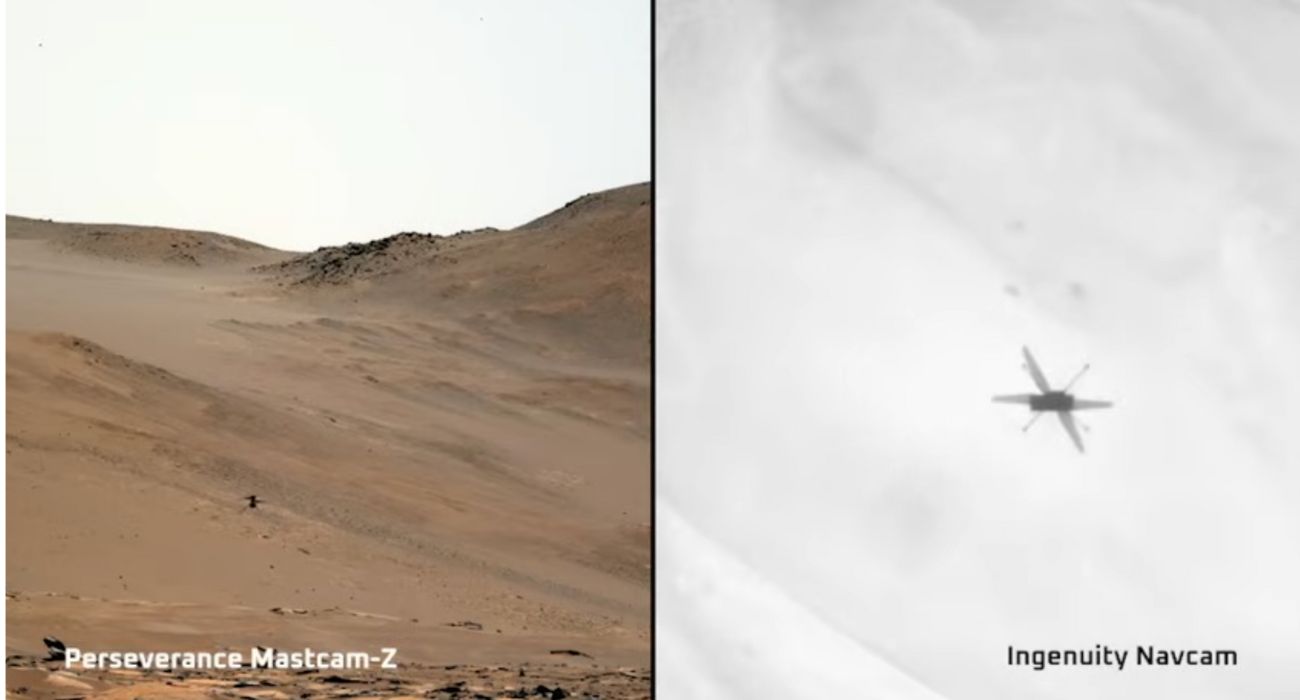NASA researchers continue to make technological advancements in their bid to explore Mars, recently hitting the significant milestone of testing aircraft on two different planets.
Scientists have been preparing to explore the red planet for some time, building spacecraft and other technologies to support exploration and, someday, even colonization. NASA began testing rotor blades for a sample-recovery helicopter in a simulated Martian environment in Texas earlier this year, as previously reported by The Dallas Express.
Now, NASA has announced that it has been testing rotors for the “next-generation Mars helicopters” at NASA’s Jet Propulsion Laboratory (JPL) in Southern California while also conducting test flights with the Ingenuity Mars Helicopter over 234 million miles away on Mars. The new rotor reaches near supersonic speeds.
Ingenuity conducted its first flight on the Martian surface in April 2021, hovering 10 feet above the ground for 30 seconds. The craft was only intended to take flight up to five times over the course of 30 days. However, since its arrival on Mars, the craft has flown 66 times, and tests of the craft’s capabilities continue.
“Over the past nine months, we have doubled our max airspeed and altitude, increased our rate of vertical and horizontal acceleration, and even learned to land slower,” said Travis Brown, Ingenuity’s chief engineer at JPL, according to NASA. “The envelope expansion provides invaluable data that can be used by mission designers for future Mars helicopters.”
Back on Earth, scientists were testing new carbon fiber rotor blades that could potentially be used on much larger crafts than Ingenuity. Scientists tested this new rotor for three weeks in the same space simulator where the Voyager, Surveyor, and Cassini crafts had been tested.
“We spun our blades up to 3,500 rpm, which is 750 revolutions per minute faster than the Ingenuity blades have gone,” said Tyler Del Sesto, Sample Recovery Helicopter deputy test conductor at JPL, according to NASA. “These more efficient blades are now more than a hypothetical exercise. They are ready to fly.”
Scientists intend to keep testing such technologies to improve their effectiveness and eliminate any issues in operation.
“Our next-generation Mars helicopter testing has literally had the best of both worlds,” said Teddy Tzanetos, Ingenuity’s project manager, per NASA. “Here on Earth, you have all the instrumentation and hands-on immediacy you could hope for while testing new aircraft components. On Mars, you have the real off-world conditions you could never truly re-create here on Earth.”
Ingenuity is expected to perform two more high-speed flights later in December.






